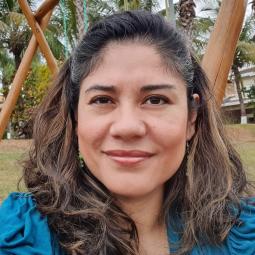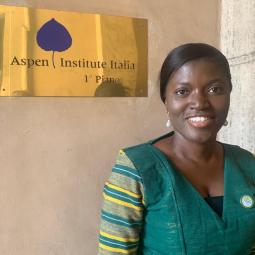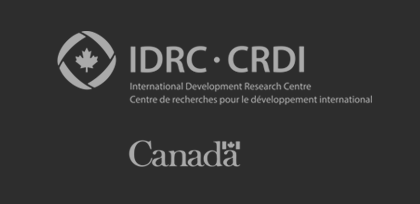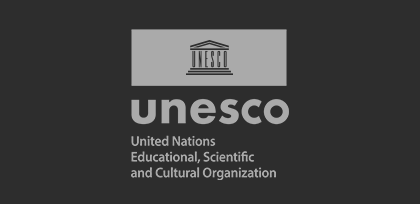OWSD NIGERIA NATIONAL CHAPTER PRESENTS RESEARCHERS AND STRESS MANAGEMENT FOR SUCCESSFUL LIVING
January 06, 2022
OWSD Nigeria National Chapter University of PortHarcourt Branch Series of Scientific Communications: Comfort C. Monago-Ighorodje on Stress Management
RESEARCHERS AND STRESS MANAGEMENT FOR SUCCESSFUL LIVING
by
Professor Comfort Chinazo Monago-Ighorodje
Department of Biochemistry
Faculty of Science, University of Port Harcourt
Introduction
Stress is encountered daily by everybody on earth as part of our daily existence and when not managed leads to various sicknesses and gradually, death. Most sicknesses and diseases emanate from stressors, which could be external or internal, hence, it becomes very important and paramount, that we should give a proper attention, critical evaluation and re-visitation to the study of stress and its management for researchers. Women in general, and particularly those in STEM field are more prone to stress.
The totality of how successful a woman will be in research and in all aspects of life is determined by the level at which she can manage the daily stress that comes her way. A successful woman is someone that has the potentials and abilities to be in charge, unruffled and at peace at every slightest provocation from stressors, be it emotional, psychological, physiological or otherwise. Unmanaged stress leads to excessive or hyper stimulation of the nervous system, then to alterations in health, leading to increased risk of cardiovascular diseases, metabolic syndromes and mortality.
Definition
Stress was first defined by Hans Selye in 1956, as anything that threatens homeostasis. Homeostasis is the combination of all the metabolic, physiologic and chemical processes that go on inside a living system, which help to maintain a steady state, especially in response to changes from external environment. Psychologists define stress as emotional or mental tension and strain from adverse conditions. Physiologically, stress is a disturbance or damage caused to an organism by adverse circumstances. Biochemists see stress as when the levels of free radicals within a system overwhelm the levels of antioxidants, leading to cells and biomolecules becoming conjugated and unable to function normally. Generally, stress could be defined as a type of response to physical, emotional or psychological strains. The source of stress is called a stressor.
Sources of Stress
Stressors could come from external or internal sources. It is noteworthy that one man’s stress could be another man’s source of joy, so stress is relative and individualistic.
External Stressors
External stressors include all in the environment that enter into the body through the five senses of the body (sensory inputs) like pain, bright light, noise, temperature(excessive coldness or hotness); environmental circumstances such as food, water quality, air and housing (location of the house being one of the major stressors, like, living in a water - logged area, insecure places with constant violence and incessant robbery attacks, living close to markets or motor parks with loud noise). The distance from home to workplace and children schools, need to be considered as this might be a source of family stress, for those that need to do school-run.
Other external sources of stress include, social issues like nature and number of people in the nuclear and extended family that may be demanding ones attention; and nature of relationship with people in the immediate and extended family like spouse, children, in-laws, friends, colleagues in the office and in the community at large. Others are life experiences: constant emotional trauma, poverty, unemployment, conflicts, break ups, divorce, abuse(sexual, drug, domestic and others), addiction, other demands and challenges of life, especially struggles to meet up urgent targets and deadlines, insomnia, nature of the job (like working from morning till night in a bank or other time consuming jobs or demands that do not allow the person to have enough time to rest).
Internal type
Internal or oxidative stress are normally developed when the total homeostasis is overwhelmed by stressors. Internally, in all cells, but especially in the mitochondria, there are unpaired molecules called free radicals, which are normal products of cells during metabolism. High demands of oxygen and energy in form of ATP during stress, releases these unpaired radicals, which are very reactive, and being unpaired are never satisfied until they bind and conjugate to biomolecules like amino acids, proteins, carbohydrates, DNAs, lipids and many others. These free radicals damage all kinds of biomolecules like hemoglobin (protein) could become conjugated, reducing the oxygen carrying capacity of the blood. Note, hemoglobin is prone to stressors that have the capacity to change the hemoglobin normal oxblood color with Fe2+ at the center, to a ferric abnormal dark-red color of fe3+ which is a killer. Also note that all types of smokes from incomplete combustion of all kinds of hydrocarbons: polycyclic aromatics, kerosene, fuel (exhaust fumes from cars, generators and others), cigarette and Indian hemps, are all able to change the ferrous blood to ferric and eventually to cancerous blood. Majority of the products of free radicals and smokes are carcinogenic, because they can disrupt the normal cell cycle to proliferative abnormal cycle that can produce piles of immature cells or cancer cells. Lipids, being mostly vulnerable are converted to toxic compounds called lipid peroxides, while DNA’s nucleotides may either be deleted, inserted or substituted, leading to cancer. Sources of free radicals are Reactive Oxygen Species (ROS) and Nitrogen Oxygen Species (NOS). Also we have oxidants that are pro free radicals: they have the potentials to develop into free radicals. These are hydrogen peroxide, super oxides, nitric oxides, ozone, and many others.
Men and women respond differently to stress, with women experiencing more stressful life events than men, while those in STEM have more stressful life challenges than the other women, because of the peculiarities in their body system and hormonal responses. Hence, puberty, menstruation, ovulation, lactation, pregnancy, menopause and post menopause all come with different hormonal pressures that might affect research. Coping strategies as defined as cognitive and behavioral processes that is judged to be hostile, difficult, inexhaustible, and harmful are found to be more resisted by STEM women. Gender sensitivity is also linked to the genes present on sex and gonadal hormones production, which tend to be more expressed in STEM based candidates than others.
Research-related stress for women in STEM
Research and innovations are not supposed to be sources of stress, because, they are rewarding. Research as a source of stress could be emotional, psychological, physical and otherwise. STEM requires high level of mental reasoning, learning, cognition, strenuous calculations, neurogenesis and straining of the brain, which are likely to cause different kinds of stress. Increase in strenuous calculations and problem solving increase brain’s demand for energy or ATP production, increase oxygen demand and nourishment; which when not available leads to brain fugue and enormous stress. Other sources of stress in research include time management (meeting up targets), chasing grants, and responsibility of churning out publications and associated rejections. Stress could come from how unconducive the research environment is, like non-availability of light, funds, medical and emergency attentions, functional equipment, collaborations, mentoring (mentor/mentee relationship) and many others.
Mechanism of cell injury
Once a stressor or stressors enter into the body, they are received as shocks, since the body receives them as xenobiotics: foreign to the body. This immediately leads to complete disequilibrium of the internal homeostasis, causing hypovolemia, hypoosmolarity, hyponatremia and hypochleremia. The body now starts to respond to the state of the stress (alarm). Two major pathways come into play: sympathetic nervous system and hypothalamus- sympathetic nervous system to produce amines including adrenaline, noradrenaline and eventually testosterone to meet up with the twitching of the muscle, make up for power and energy surge needed to confront the fight or flight response. Also, there is increased concentrations of glucocorticoids (cortisol or Stress-hormone), leading to increased concentrations of glucose, fats and amino acids in the blood. Increase in these hormones like adrenaline, increases the blood pressure, peripheral blood vasoconstriction and tachycardia. Increase in glucose concentration can lead to increase in glycated hemoglobin, diabetes mellitus, and other diseases if not managed.
End results of stress
The end result of stress is overwhelming of the homeostasis, with the antioxidants not sufficient to fight the free radicals generated from stress; the immune system becomes disrupted, affecting the entire body system: blood pressure changes leading to heart deceases, cancer and many others.
Management of stress – the sure pathway to research life
The first major thing to do, is to be conscious of the fact, that stress exists and that is deadly; secondly, to identify our collective and individual stressors; develop strategies on how to manage them, by reducing undue exposures, trafficking and propagation of stressors in our lives. Some of the ways we can manage stress include:
1) Self-control: be the master and be in charge
Man is a tripartite being: a spirit with a soul, living inside a body. The body is simply a container of the main man (spirit and soul), hence, when these two leave the body, death is said to occur. The body always want to rule or dominate the spirit and soul, hence, there are always conflicts amongst these three of which to be in control. Self-control, therefore, is when the body wants to engage in an adverse drive that might hurt or attract stress, but was stopped, because, the spirit and the soul, in unionism have perceived it to be stressor to the three, decoded by the brain and central nervous system, and automatically command the body not to carry out the action. This is putting a check on actions, especially to avert dangers or stressors.
The five senses of the body are the major entrances into the body. These entrances have gates, channels or doors. A self-controlled woman is the one that has the keys to all the doors of her life. She has the voluntary capacities, inbuilt potentials and God-given prowess as a woman to sieve, allow, disallow, filter, open or completely lock any of the gates of her life, at her will, dictate and description. The woman has the power to instruct the mouth what to allow to enter or not to enter; also she can tame her tongue to speak words of knowledge, wisdom and not unnecessary babblings, gossiping or useless words. She has the choice to listen to what she wants and the power to give her heart or mind to what she wants to pursue. She is built and properly constructed to put a boundary to everything including voluntary stressors and so can determine to lock her heart against poisonous stressors that can disrupt her research or career life.
To set boundaries to stressors is very important in stress management, you must not attend every occasion, eat everything because its free, watch every scene or give your heart, attention and thought to every challenge or things people do, especially, the poisonous stressors of the mind. Put check points to all the gates of your life and it will surprise you, how much of the life-stressors you can be sent packing out of your life.
2) Emotional management
The seat of emotions is the brain, carrying the thought realm: where conflicts, resolutions and actions are being weighed before performance by the body. Things like anger, depression, anxiety, worry, quarrels, cheating, deceit, envy, jealousy and many others emanate from the thought realm. There are many hormones, nature uses to manage emotions; all we need to do is to provoke their synthesis with action. Examples of such hormones are like endorphins, dopamine, oxytocin, serotonin and others. Endorphins for example, is released to manage stress. Many things can provoke the synthesis and release of this hormone, like deliberately, developing the attitude of singing, listening to music, laughing, dancing, playing games, praying, meditation, doing exercise, relaxing the mind and the muscles of the body and having enough time for rest and sleep. A researcher can instruct oneself to evacuate from the mind, all the toxic thoughts and dwell on meditations for breakthrough, innovations and researches that can help humanity to come out of poverty, climate challenges, hunger, stress , diseases and others. This is a sure way of synthesizing endorphins. Whatever is peaceful, lovely, kind, joyous or brings inner peace, strive to do them for they are automatic precursors for endorphins. Dopamine works at the reward center for feeling high. Don’t allow drugs like opioids to overtake your emotions, as they inhibit dopamine. Details of all these biochemistry will be communicated to us later.
3) Conflict Resolution
Every human is created to be on excited or stressed state when the mind is defiled or polluted with a conflict, no matter where the conflict is coming from, who is involved or who is at fault. The mind will never be at peace, even if, it’s your own child born from your womb. This is the way the human mind is constructed by God. Now imagine if you and the stressor are inside the same house or on the same bed, in the same school or the same office, department or in the same neighborhood. Please you have to do something very fast as we need a concentrated and peaceful mind to do research. This tiny neglected stressor may grow and gradually develops wings and begin to fly. When you look back after many years of irresolution, you will wonder what have developed the cancers and tumors. Every human is created to be on excited or stressed state, once the mind is defiled or polluted, no matter how small the stressor may be.
How do you know that you have an unresolved conflict with someone, once you see the person, the adrenaline is automatically released, heart beat increases, with difficulty in looking into the person’s eyes. There will be a kind of withdrawal and loss of warmness, pet names and laughter. My two girls quarreled with one of their friends living opposite us, I heard the mother told her to keep away from my children. These were children that were so friendly before. One day, I was at the gate of my house with my two girls and this girl needed to pass our gate, she was like picking something from the ground, so much ashamed of herself, not able to look at us and looking completely lost; even when I called her, she could not raise her eyes from the ground. Imagine the trauma and threat to her emotions. Please, remove the heavy loads of conflicts, and reduce the adrenaline level, for proper and conducive mind for research.
4) Financial Management
We need enormous funds to do research, hence, financial problem is a major stressor in research and life challenges. We need to set boundaries again on how to spend wisely, without entering into unnecessary loan. The major needs on earth that are inevitable on daily basis are food, shelter, clothing’s, school fees, house rents and others. There must be scale of preference and also not allowing expenditures to be larger than the income. Also, we should not attract stress from the landlord, nor allow our children to go to schools, we cannot afford; these are big sources of stress that can affect the mind and research. We therefore need to undergo intensive trainings on how to source for funds: grants, scholarships and others for research purposes.
Save, invest, and diversify income source to create additional income.
5) Time management is key
We need to have time frames for our researches depending on prevailing circumstances in individual life to avoid being stressed. For example a young woman with little kids and pregnant, should know how to accommodate all these to avoid stress. Pick up one thing at a time, finish it to the extent that it is not a stressor. This means that a genuine research or assignment could become a stressor, when the output is no more in consonance with the input. This happens when the brain is tired and giving us signal, but we are still trying to meet up the challenges or demands, this is one of the greatest sources of cortisol. We may be sleeping or dozing-off and on, trying to go back and finish the work. This is a killer that should be avoided because of the enormous damages to the brain. Know when to rest, relax the nervous, sleep and others. When you revisit the work with fresh brain, you may finish it on time. Try to beat the time, be early risers by waking up or doing things ahead of others and ahead of time, like starting on time to churn out publications, before the time of promotion.
6) Use your talents and endowments to influence others - giving out to the society
This is a source of joy and confidence. You can organize a seminar for the women in the church, school, students, neighborhood. Influence your environment positively, look at your environment and make impact. You can be in the place that needs no competition. Nobody will quarrel with you if you put up a free extra moral lectures for your students right now, to help those at the edge of failing out.
7) Choose your menu to be full of stress engulfing foods(antioxidants), free radical scavengers and detoxifiers (water)
Antioxidants are molecules that are capable of engulfing, moping off or scavenging free radicals We are naturally endowed with endogenous antioxidants, but when these are overwhelmed, diseases start. We need to eat diets full of vegetables, fruits, nuts, grains, fibers and more of the essential fatty acids- omegas three and six fats from fish oil, as we avoid high consumption of refined sugars(Coke, Fanta, Malt), hydrogenated fats or trans-fat (butter and fried food). Heating of red and vegetable oils to start smoking, before cooking hydrogenates fatty acids, which produces peroxides and changes the cis isomer of long chain fatty acid to trans-isomer. Trans isomers are the main killers and sources of all heart diseases. We need to constantly drink water to hydrate the cells and detoxify our systems. This reduces accumulation of toxic wastes in the body (stressors). We don’t need to wait until we are tasty to drink water, we should make it a habit.
8) Adapt: identify your stressors, handle the ones you can handle and adapt to the ones you cannot handle
There are some sources of stress we cannot handle as humans, these are circumstances that are beyond our control and so we must learn how to adapt to the reality, since we cannot change or do anything to stop them, like death of our loved ones. Adaptation here involves the ability to quieten oneself, and tutor the subconscious or the inner being to allow the tripartite man know, comprehend and understand that nothing humanly speaking, will bring back the dead or change the situation. This reality and wound may take a gradual process to be comprehended and heal, but the earlier this is done, the better for the person. Many women or researchers have lost their minds, interest in research, jobs, properties, rights and privileges; and sometimes plunged into terminal diseases because of shocks and traumas of loosing their loved ones or fighting battles they can never win, because of ignorance.
CONCLUSION
Disallow undue traffickers from high jacking our reward centers (the seat of stress management) and so disallowing them from becoming our directors, masters, lords and determinants of our moods and characters. Do not allow stressors to give wrong definitions of who you are; always allow the tripartite man to be in agreement and at peace with one another.











































